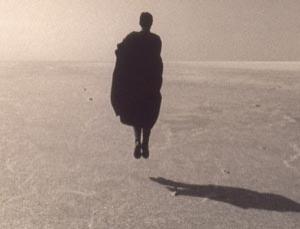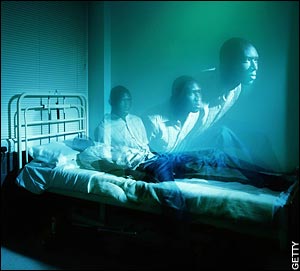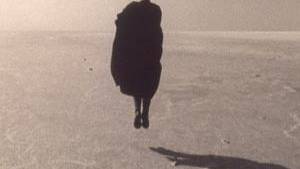Out of your head: Leaving the body behind
Source: newscientist.com
 The young man woke feeling dizzy. He got up and turned around, only to see himself still lying in bed. He shouted at his sleeping body, shook it, and jumped on it. The next thing he knew he was lying down again, but now seeing himself standing by the bed and shaking his sleeping body. Stricken with fear, he jumped out of the window. His room was on the third floor. He was found later, badly injured.
The young man woke feeling dizzy. He got up and turned around, only to see himself still lying in bed. He shouted at his sleeping body, shook it, and jumped on it. The next thing he knew he was lying down again, but now seeing himself standing by the bed and shaking his sleeping body. Stricken with fear, he jumped out of the window. His room was on the third floor. He was found later, badly injured.What this 21-year-old had just experienced was an out-of-body experience, one of the most peculiar states of consciousness. It was probably triggered by his epilepsy (Journal of Neurology, Neurosurgery and Psychiatry, vol 57, p 838). "He didn't want to commit suicide," says Peter Brugger, the young man's neuropsychologist at University Hospital Zurich in Switzerland. "He jumped to find a match between body and self. He must have been having a seizure."
In the 15 years since that dramatic incident, Brugger and others have come a long way towards understanding out-of-body experiences. They have narrowed down the cause to malfunctions in a specific brain area and are now working out how these lead to the almost supernatural experience of leaving your own body and observing it from afar. They are also using out-of-body experiences to tackle a long-standing problem: how we create and maintain a sense of self.
Dramatised to great effect by such authors as Dostoevsky, Wilde, de Maupassant and Poe - some of whom wrote from first-hand knowledge - out-of-body experiences are usually associated with epilepsy, migraines, strokes, brain tumours, drug use and even near-death experiences. It is clear, though, that people with no obvious neurological disorders can have an out-of-body experience. By some estimates, about 5 per cent of healthy people have one at some point in their lives.
People without any obvious neurological disorder can have an out-of-body experience
So what exactly is an out-of-body experience? A definition has recently emerged that involves a set of increasingly bizarre perceptions. The least severe of these is a doppelgänger experience: you sense the presence of or see a person you know to be yourself, though you remain rooted in your own body. This often progresses to stage 2, where your sense of self moves back and forth between your real body and your doppelgänger. This was what Brugger's young patient experienced. Finally, your self leaves your body altogether and observes it from outside, often an elevated position such as the ceiling. "This split is the most striking feature of an out-of-body experience," says Olaf Blanke, a neurologist at the Swiss Federal Institute of Technology in Lausanne.
Surprisingly pleasant
Some out-of-body experiences involve just one of these stages; some all three, in progression. Bizarrely, many people who have one report it as a pleasant experience. So what could be going on in the brain to create such a seemingly impossible sensation?
The first substantial clues came in 2002, when Blanke's team stumbled across a way to induce a full-blown out-of-body experience. They were performing exploratory brain surgery on a 43-year-old woman with severe epilepsy to determine which part of her brain to remove in order to cure her. When they stimulated a region near the back of the brain called the temporoparietal junction (TPJ), the woman reported that she was floating above her own body and looking down on herself.
This makes some kind of neurological sense. The TPJ processes visual and touch signals, balance and spatial information from the inner ear, and the proprioceptive sensations from joints, tendons and muscles that tell us where our body parts are in relation to one another. Its job is to meld these together to create a feeling of embodiment: a sense of where your body is, and where it ends and the rest of the world begins. Blanke and colleagues hypothesised that out-of-body experiences arise when, for whatever reason, the TPJ fails to do this properly (Nature, vol 419, p 269).
More evidence later emerged that a malfunctioning TPJ was at the heart of the out-of-body experience. In 2007, for example, Dirk De Ridder of University Hospital Antwerp in Belgium was trying to help a 63-year-old man with intractable tinnitus. In a last-ditch attempt to silence the ringing in his ears, Ridder's team implanted electrodes near the patient's TPJ. It did not cure his tinnitus, but it did lead to him experiencing something close to an out-of-body experience: he would feel his self shift about 50 centimetres behind and to the left of his body. The feeling would last more than 15 seconds, long enough to carry out PET scans of his brain. Sure enough, the team found that the TPJ was activated during the experiences.
Insights from neurological disorders or brain surgery can only take you so far, however, not least because cases are rare. Larger-scale studies are required, and to achieve this Blanke and others have used a technique called "own-body transformation tasks" to force the brain to do things that it seemingly does during an out-of-body experience. In these experiments, subjects are shown a sequence of brief glimpses of cartoon figures wearing a glove on one hand. Some of the figures face the subject, others have their back turned (see diagram). The task is to imagine yourself in the position of the cartoon figure in order to work out which hand the glove is on. To do this, you may have to mentally rotate you own body as one image succeeds another. As volunteers performed these tasks, the researchers mapped their brain activity with an EEG and found that the TPJ was activated when the volunteers imagined themselves in a position different from their actual orientation - an out-of-body position.
The team also zapped the TPJ with transcranial magnetic stimulation, a non-invasive technique that can temporarily disable parts of the brain. With a disrupted TPJ, volunteers took significantly longer to do the own-body transformation task (The Journal of Neuroscience, vol 25, p 550).
Other brain regions have been implicated too, including ones close to the TPJ. The emerging consensus is that when these regions are working well, we feel at one with our body. But disrupt them, and our sense of embodiment can float away.
This does not, however, explain the most striking feature of out-of-body experiences. "It's a great puzzle why people, from their out-of-body locations, visualise not only their bodies but things around them, such as other people," says Brugger. "Where does this information come from?"
One line of evidence comes from the condition known as sleep paralysis, in which healthy people find their body immobilised as in sleep despite being conscious (see "The twilight zone"). In a survey of nearly 12,000 people who had experienced sleep paralysis, Allan Cheyne of the University of Waterloo in Ontario, Canada, found that many reported sensations similar to out-of-body experiences. These included floating out of their body and turning back to look at it.
Cheyne suggests that this might be the result of conflicts of information in the brain. During sleep paralysis, it is possible to enter a REM-like state in which you dream of moving or flying. Under these circumstances you are conscious of a sensation of movement, yet your brain is aware that your body cannot move. In an attempt to resolve this sensory conflict, the brain cuts the sense of self loose (Cortex, vol 45, p 201). "It resolves by splitting the self from its body," says Cheyne. "The self seems to go with the movement and the body gets left behind." Perhaps similar sensory conflicts cause classic out-of-body experiences.
The brain resolves sensory conflict by splitting the self from the body. The body gets left behind
Brugger, meanwhile, has a suggestion for how someone might see things even though their eyes are shut, based on one of his patients who reported an out-of-body experience. According to this patient's father, who was sitting by the bedside, he had his eyes closed. Yet he later reported seeing, from a perspective above his bed, his father going to the bathroom, returning with a wet towel and towelling his forehead.
The patient presumably heard his father walk to the bathroom and run some water, and must have felt the wet towel on his head. Brugger speculates that his brain converted those stimuli into a visual image, not unlike what happens in synaesthesia. This still does not, however, explain the external vantage point. "It's not clear how the brain constructs that," says cognitive philosopher Thomas Metzinger of the Johannes Gutenberg University in Mainz, Germany.
Metzinger does have a suggestion. Imagine an episode from a recent holiday. Do you visualise it from a first-person perspective, or from a third-person perspective with yourself in the scene? Surprisingly, most of us do the latter. "In encoding visual memories, the brain already uses an external perspective," says Metzinger. "We don't know much about why and how, but if something is extracted from such a database [during an out-of-body experience], there may be material for seeing oneself from the outside."
Whatever the mechanism, the study of out-of-body experiences promises to help answer a profound question in neuroscience and philosophy: how does self-consciousness emerge? It's abundantly clear to us that we have a sense of self that resides, most of the time, in our bodies. Yet it is also clear from out-of-body experiences that the sense of self can seemingly detach from your physical body. So how are the self and the body related?
To address that question, Metzinger has teamed up with Blanke and his colleagues in an experiment that induces an out-of-body experience in healthy volunteers. They film each volunteer from behind and project the image into a head-mounted display worn by the volunteer so that they see an image of themselves standing about 2 metres in front. The experimenters then stroke the volunteer's back - which the volunteers see being done to their virtual self. This creates sensory conflict, and many reported feeling their sense of self migrating out of their physical bodies and towards the virtual one (Science, vol 317, p 1096).
To Metzinger, these experiments demonstrate that self-consciousness begins with the feeling of owning a body, but there is more to self-consciousness than the mere feelings of embodiment. "Selfhood has many components," says Metzinger. "We are trying to fill them in, building block by building block. This is just the beginning."
Article from: NewScientist.com

Torbjörn Sasersson - Soultravel.nu
Sandy Frost - Intuition Based Research & Non-profit Organizations (Subscription)
Neil Kramer - Polarity of Consciousness & Finding Oneself (Subscription)
Neil Kramer - Awakening, Eschatology & Entheogens
Lynne McTaggart - The Intention Experiment
Jim Sanders - Film, Nosis, Activism & Shamanism
Anthony Peake - Quantum Weirdness & Precognition (Subscription)






















